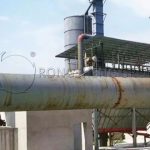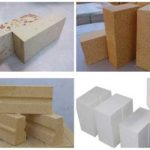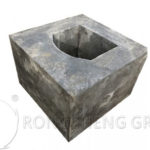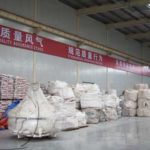There are more and more types of rotary kilns, and vertical kiln is one of them. When many users use rotary kiln equipment, they want to increase the production capacity of the equipment and reduce the energy consumption of the equipment. However, users themselves have no good measures to save energy and reduce consumption. What are the energy-saving and consumption-reducing measures for large-scale kaolin rotary kilns and how to do them? RS Kiln Refractory Factory provides comprehensive refractory services for high-temperature industrial furnaces. Reasonable and feasible solutions can be proposed based on the actual working conditions of the rotary kiln.
In recent years, with the mining of mines, the demand for kaolin rotary kilns has been increasing. When it comes to the kaolin rotary kiln, we will think of it as a piece of very dusty industrial equipment. Is kaolin rotary kiln environmentally friendly? The answer is yes, the kaolin rotary kiln meets national environmental protection requirements. Since it is environmentally friendly, is there a lot of loss? Next, we will start with an understanding of the kaolin rotary kiln and talk about the consumption reduction measures of the kaolin rotary kiln.
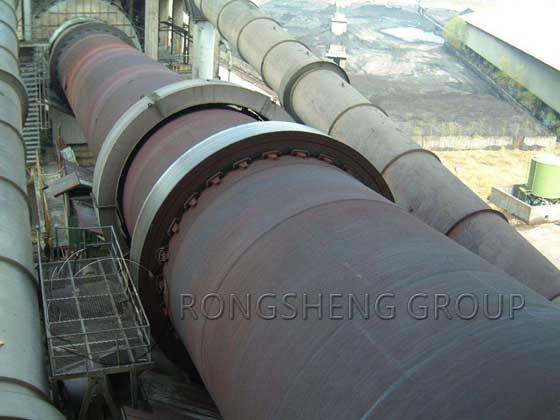
What is a Kaolin Rotary Kiln?
The kaolin rotary kiln refers to a piece of thermal equipment that continuously calcines clinker with the upper part feeding and the lower part discharging material. It is composed of a kiln body, a feeding and discharging device, and ventilation equipment. It is widely used for calcining various refractory raw materials and lime. Its advantages include less investment in infrastructure, less floor space, high thermal efficiency, low fuel consumption, and easy mechanization and automation.
The barrel of the kaolin rotary kiln is straight cylindrical. Its shell is made of steel plate and lined with refractory materials. In a large lime shaft kiln that uses coke as fuel, the inner diameter of the kiln body at the lower part of the cooling zone gradually shrinks to connect with the discharge tray of the discharge machine. The mechanized shaft kiln is equipped with a distributor in the center of the upper part of the kiln body, and there are two smoke exhaust ports symmetrically opened on the sides, which are connected to the dust collector or chimney by pipes. The lower part of the kiln body is equipped with a discharging machine. The artificial vertical kiln chimney is located in the middle of the kiln roof, and the feeding doors are symmetrically arranged around the lower part of the kiln body. To avoid the phenomenon of materials sticking to the kiln wall, the vertical kiln for calcining dolomite and the vertical kiln for magnesia can install a vaporization cooling stave in the calcining zone instead of the refractory brick lining.
Consumption Reduction Measures for Kaolin Rotary Kiln
-
Sealing modification of the bottom of kaolin rotary kiln
Before the transformation, air leakage was serious at the bottom of the kaolin rotary kiln. It mainly relies on the ash extractor for furnace bottom sealing. However, there is a 2-5mm gap between the rotor and the casing of the ash discharge machine, and a large amount of air leaks from the device, which brings many adverse effects to production. For example, it causes a large amount of waste of fan air volume, and at the same time causes the lime furnace air and gas pressure ratio to be too high and uncertain. Flue gas emissions increase heat loss and adversely affect production safety. The airflow leaking from the bottom of the furnace not only brings out a large amount of heat but also causes the temperature in the furnace to be transferred to the bottom of the lime furnace. The temperature of the cooling section and the furnace bottom is increased, and most of the lime when it comes out of the furnace contains baking materials. The highest temperature can reach over 500 degrees Celsius, resulting in a large loss of heat energy. At the same time, it is not conducive to the safe operation of furnace bottom equipment and the cleaning of waste rocks in finished lime.
For the above reasons, the air leakage problem at the bottom of the furnace needs to be improved. Design and install a sealing device in front of the ash discharge machine. The sealing device uses an electric motor hydraulic push rod power to open and close the discharge port. The problem of air leakage can be solved by sealing the bottom of the furnace without discharging materials to prevent wind and gas leakage. This sealing device is made of thicker steel castings, which are not easy to deform and have good sealing effects and long service life.
-
Utilization of flue gas waste heat from kaolin rotary kiln
During the normal production process, the temperature of the flue gas discharged from the kaolin rotary kiln is 300-600 degrees Celsius. It is directly discharged into the atmosphere and the heat is directly lost. This part of the heat energy has considerable utilization value. Therefore, the utilization of flue gas waste heat should be considered.
First, the combustion air is connected to the top of the furnace through the pipe and enters the upper part of the heat exchanger. After being heated by the heat exchanger, it is connected from the bottom of the heat exchanger to the burner part in the middle of the kiln for use when burning gas. The wind temperature rises by 150-300 degrees Celsius based on the original room temperature. After the air temperature rises, the effect of utilizing the waste heat of the kaolin rotary kiln is very obvious, saving 10%-15% of gas, and the economic benefits are considerable.
Because the flue gas dust in the kiln is too large, it is easier to block the internal pipes of the heat exchanger. We use an air compressor scheduled soot blowing system to blow the device regularly. This fundamentally solves the problem of dust being discharged into the atmosphere, saving energy and protecting the environment.
-
Fan frequency conversion control technology
According to this, the fan frequency converter uses a sine wave PWM pulse width modulation circuit. After adopting variable frequency speed regulation, the frequency can be adjusted in time according to the air volume to adjust the fan speed. By adjusting the frequency of the fan to change the air volume, it can save electricity.
-
Choose the correct kiln type
Since different kiln types have different characteristics, different companies and different periods have different weights for each feature when choosing a kiln type. The correct choice of kiln type is also a consumption reduction measure, but most of it needs to follow the following principles.
(1) Comprehensive utilization efficiency of resources
The block size requirement of traditional shaft kiln roasting raw materials should be greater than 40mm, while in limestone mining, raw ore block size components generally less than 40mm account for about 1/3 of the total. Considering comprehensive utilization factors, the rotary kiln has great advantages (above 10mm), and the double-chamber vertical kiln can roast limestone raw materials above 20mm. Therefore, from the perspective of comprehensive utilization of resources, rotary kilns and double-chamber vertical kilns are conducive to improving the comprehensive utilization rate of resources.
(2) Consider energy saving and emission reduction factors
The double-chamber vertical kiln has a unique design and structure, and its thermal efficiency can reach more than 85%. Lower heat consumption means lower energy consumption and lower emissions of exhaust gas pollutants. Domestic kaolin rotary kilns use low calorific value fuel due to design flaws. The exhaust temperature at the top of the kiln is too high, resulting in the highest energy consumption among all kiln types.
(3) Reasonable selection according to production scale
In the lime industry, large-scale equipment is the development direction. Large-scale is conducive to production management, improving labor productivity and reducing unit fuel consumption. Judging from the mature technology and application practice, the rotary kiln currently has the conditions for large-scale development. The annual production capacity of a single kiln of roasted lime in a rotary kiln can reach 500,000 tons.
(4) Product production quality
The Lime Kiln types can be roughly divided into three grades according to product quality (activity). The first-grade, rotary kiln, double chamber vertical kiln, and sleeve vertical kiln have an activity of about 350ml. The second-grade, domestically produced kaolin rotary kiln, has an activity level of about 320ml. The third-grade, coke vertical kiln, and energy-saving vertical kiln, has an activity level of about 280ml. Therefore, the kiln type for producing activated lime should be selected from the first two grades.
(5) Consider production costs
Active lime must be used in steelmaking production, so the kiln type selected to produce active lime for steelmaking must be selected from rotary kilns, imported shaft kilns, and domestic gas-fired kilns. When the factors affecting the economic benefits of steelmaking brought by the activity index are not considered, the annual cost per unit output during the life cycle of different kiln types can be calculated. That is, the annual value of the cumulative discounted value of the costs incurred in each year is used to compare the kiln operating costs.
(6) Consider fuel adaptability
The rotary kiln must use high calorific value gas, mainly coke oven gas, or pulverized coal. Imported vertical kilns such as double-chamber kilns, sleeve kilns, and double-beam kilns can use mixed gas mainly composed of converter gas. When the size of the vertical kiln is large, the calorific value of the gas should be appropriately increased, otherwise, it will affect the utilization coefficient of the lime kiln.
In addition to process and technical factors, the determination of the type of new lime kiln must also be determined based on external factors such as enterprise site conditions, financial status, and fuel conditions. The selected kiln type and specifications are based on the principle of being as single as possible. The unification of equipment is beneficial to production management, employee training, and the reduction of spare parts inventory. This can reduce production costs.
Leave Your Requirements on RS Kiln Refractory Bricks And Castable Materials! We Will Reply You In 12 Hours!:


